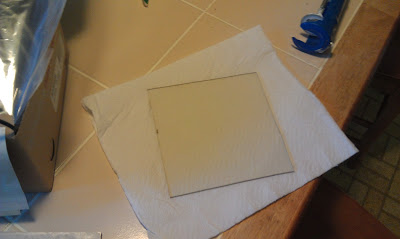I briefly mentioned in one of my last posts about ordering and receiving a pico projector to experiment with. I obtained a re-furbished AAXA P2JR
directly from their webite
http://www.aaxatech.com/products/p2jr_pico_projector.html .
 |
The victim
|
It came with the usual accessories, power adapter, micro-VGA to VGA adapter, composite cables, etc... My intent in ordering this is to see if I can adapt it for use in a bottom-up (or top-down) UV DLP 3d printer. I was a little nervous for several reasons. Normally, I don't just purchase new pieces of technology for the sole purpose of ripping them apart, but I figured I needed to break a few eggs to make an omelet.
I was hoping that this projector would 'just work' and be able to cure resin without any modifications, but I pretty much figured it was going to need some mods. After powering it up, connecting it to my computer, and projecting silly images across my walls, cats, and girlfriend, I decided to get down to business. I ran my latest development code of 'Creation Workshop', sliced up a model, and chose a nice slice to test with.
 |
| Initial resin test |
I put a few drops of UV resin in a plastic sandwich bag, laid it flat, and projected an image slice. It went pretty much how I figured. After about 30 seconds, I checked the bag, and to my disappoint (but not surprise) I saw that it had failed to cure the resin in the slightest.
Now, I have it on good source that at least one person in the community has been able to modify a pico-projector for UV DLP purposes, so I wasn't ready to give up yet. I began to prep the patient for surgery.
 |
| Back cover off |
 |
| The green and blue cable goes to the DLP unit's LEDs |
 |
| A flat ribbon cable connects the DLP to the main board |
I was kinda nervous taking this all apart. What if I break it? What if I nick off a resistor? Am I about to lose 169$ bucks? Well, I hit my stride, and decided to make some progress in the name of science. I was able to completely dis-assemble the projector into it's essential components, the case, the speaker, the battery, the main board, and the DLP unit which was attached to a hefty heat sink.
I gently lifted the little bar that held down the ribbon cable to remove the DLP. After freeing the DLP from the main board, I had a better chance to examine the actual DLP projector without fear of tearing the ribbon cable.
 |
| Note the blue/green wires, L-bracket and copper heatsink |
Initially, I was a little puzzled by the 2 sets of 4 wires.
 |
| A good view of the optic-path |
At the bottom/left of the picture, you can see the L-Bracket, each side has a 4-wire lead. Light is being projected in from 2 sides - each at a 90 degree angle from each other. Notice the funny-looking bluish glass (it's important later).
I figured that the L-Bracket contained the LEDs, and that I was probably going to have to replace them with a better UV source. I carefully sliced through the black rubbery epoxy holding the LED L-Bracket to the side of the DLP Unit.
 |
| The removed Led bracket |
I examined the LED L-bracket and noted that 1 led was marked R/B and the second was marked G. Without getting TOO much in theory about how DLP projectors work, I wanted to make a few comparisons between Color-wheel types and LED types.
In a Color-wheel type of DLP projector, a light source is projected through a spinning color wheel. The wheel has an encoder mechanism that tells the control electronics which color the light is currently projecting through. The appropriate color mask is displayed on the DLP micro-mirror array.
In a LED-type projector, either 1, 2, or 3 LEDs are used. Since LEDs can quickly turn on/off, the control electronics will turn on a single color, the DLP chip will display the appropriate mask-image for that color, and the process is repeated for all colors.
 |
| An image I found that explains the optic path |
The above image is NOT a picture of my DLP device, but serves to show the portions of the optic path. My optic path is a little different, but has very similar elements.
Light from LEDs shine through collumnating optics. Dichroic mirrors (
http://en.wikipedia.org/wiki/Dichroic_filter) reflect a specific frequency of light through a fish-eye lens, reflect on a right angle, then pass through the DLP portion and out the projection lens.
I knew that the dichroic mirrors were going to be a problem. They only allows a very narrow bandwidth of light through.
I went ahead and took out the dichroic mirror reflectors and replaced it with a single FSM (Front surface mirror). This essentially blocked off 1 light path, which was alright, because I'm only going to use 1 light path for a UV led.
I've got a bit more to say about this and a few more results, but I'm going to save it for part 2.
Stay tuned.
-Steve


















































